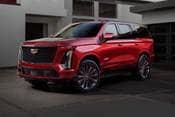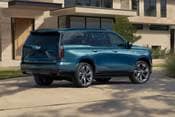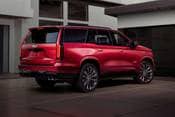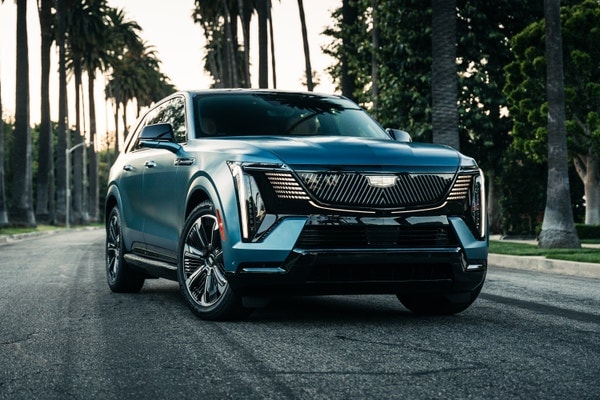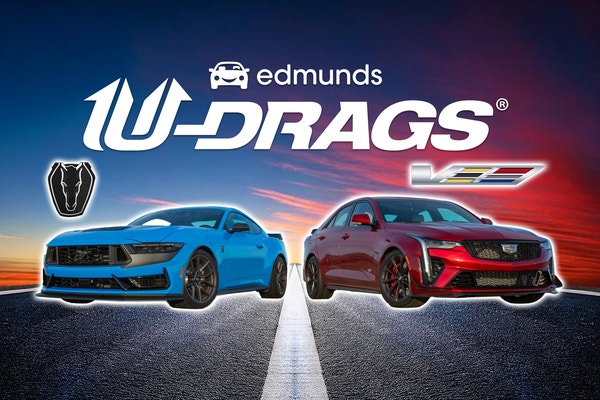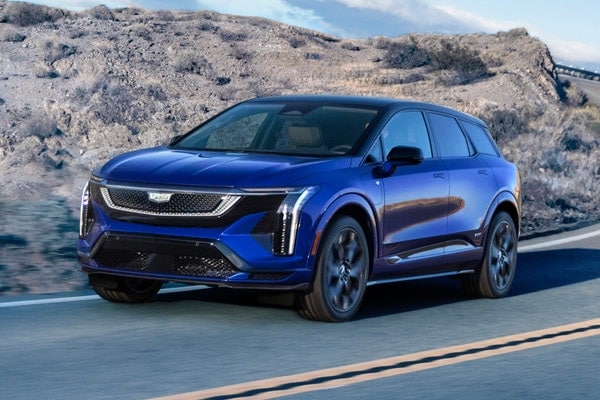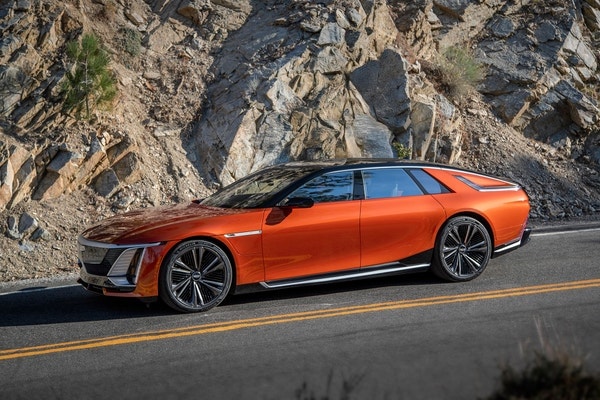2025 Cadillac Escalade
Price Range: $87,595 - $159,995
Helpful shopping links
2025 Cadillac Escalade video
Cadillac Escalade-V vs. Lucid Air Grand Touring: High-Horsepower Takes on American Luxury
NOTE: This video is about the 2023 Cadillac Escalade, but since the 2025 Cadillac Escalade is part of the same generation, our earlier analysis still applies.
This ain't your typical comparison test, folks: We've put the absolutely ridiculous Cadillac Escalade-V up against our long-term Lucid Air Grand Touring in a test of high-powered American luxury. While they are, of course, very different, the Escalade-V and Lucid Air Grand Touring are perhaps more similar than you might expect; they're about the same price, produce stupid… amounts of horsepower, and are packed with oodles of luxurious accoutrements. So, which one snags the win for the best interpretation of modern American luxury? Join Edmunds' Brian Wong in the video above to find out!
PRICE CHECKER™
Check a dealer's price
Bring back a dealer's quote, and we'll tell you if it's a good price!
Check your price quote
Price:
$ -
Graph shown is a sample only
FAQ
Is the Cadillac Escalade a good car?
The Edmunds experts tested the 2025 Escalade both on the road and at the track. Edmunds’ consumer reviews show that the 2025 Escalade gets an average rating of 4 stars out of 5 (based on 23 reviews) What about cargo capacity? When you're thinking about carrying stuff in your new car, keep in mind that the Escalade has 25.5 cubic feet of trunk space. And then there's safety and reliability. Edmunds has all the latest NHTSA and IIHS crash-test scores, plus industry-leading expert and consumer reviews to help you understand what it's like to own and maintain a Cadillac Escalade. Learn more
What's new in the 2025 Cadillac Escalade?
According to Edmunds’ car experts, here’s what’s new for the 2025 Cadillac Escalade:
- Updated infotainment and dash-spanning tech display
- Optional VIP seating package
- More driver safety features
- Part of the fifth Escalade generation introduced for 2021
Is the Cadillac Escalade reliable?
To determine whether the Cadillac Escalade is reliable, read Edmunds' authentic consumer reviews, which come from real owners and reveal what it's like to live with the Escalade. Look for specific complaints that keep popping up in the reviews, and be sure to compare the Escalade's 4-star average consumer rating to that of competing vehicles. Learn more
Is the 2025 Cadillac Escalade a good car?
There's a lot to consider if you're wondering whether the 2025 Cadillac Escalade is a good car. Our consumer reviews show that the 2025 Escalade gets an average rating of 4 stars out of 5 (based on 23 reviews). Safety scores, fuel economy, cargo capacity and feature availability should all be factors in determining whether the 2025 Escalade is a good car for you. Learn more
How much should I pay for a 2025 Cadillac Escalade?
The least-expensive 2025 Cadillac Escalade is the 2025 Cadillac Escalade Luxury 4dr SUV (6.2L 8cyl 10A). Including destination charge, it arrives with a Manufacturer's Suggested Retail Price (MSRP) of about $87,595.
Other versions include:
- Luxury 4dr SUV (6.2L 8cyl 10A) which starts at $87,595
- Luxury 4dr SUV 4WD (6.2L 8cyl 10A) which starts at $90,595
- Premium Luxury 4dr SUV (6.2L 8cyl 10A) which starts at $96,795
- Sport 4dr SUV (6.2L 8cyl 10A) which starts at $97,395
- Premium Luxury 4dr SUV 4WD (6.2L 8cyl 10A) which starts at $99,795
- Sport 4dr SUV 4WD (6.2L 8cyl 10A) which starts at $100,395
- Premium Luxury Platinum 4dr SUV (6.2L 8cyl 10A) which starts at $116,395
- Sport Platinum 4dr SUV (6.2L 8cyl 10A) which starts at $116,895
- Premium Luxury Platinum 4dr SUV 4WD (6.2L 8cyl 10A) which starts at $119,395
- Sport Platinum 4dr SUV 4WD (6.2L 8cyl 10A) which starts at $119,895
- V 4dr SUV AWD (6.2L 8cyl S/C 10A) which starts at $159,995
What are the different models of Cadillac Escalade?
If you're interested in the Cadillac Escalade, the next question is, which Escalade model is right for you? Escalade variants include Luxury 4dr SUV (6.2L 8cyl 10A), Luxury 4dr SUV 4WD (6.2L 8cyl 10A), Premium Luxury 4dr SUV (6.2L 8cyl 10A), and Sport 4dr SUV (6.2L 8cyl 10A). For a full list of Escalade models, check out Edmunds’ Features & Specs page. Learn more

